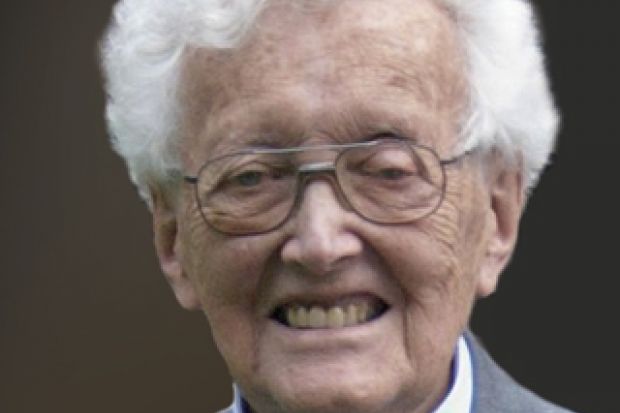Very tall, with a shock of white hair, Peter Young was a "cheerful, humorous and knowledgeable" engineering professor who also enjoyed choral singing.
Born in Boston, Lincolnshire on 23 November 1923, Professor Young joined the Royal Naval Volunteer Reserve as an engineer cadet in 1942 and served until 1946 after working his way up to sub-lieutenant.
On leaving the armed forces, he went to study natural sciences at St Catharine's College, Cambridge, and remained at the university to complete a doctorate and a research Fellowship in extractive metallurgy.
In 1954, Professor Young left academia for a career in industry. He worked at the Imperial Smelting Corporation as a development metallurgist for a year before joining Head Wrightson in Teesside as general manager in charge of research and development, later becoming its director of research.
Professor Young moved to Australia in 1965 to take up the directorship of the Australian Mineral Development Laboratories, but returned to the UK three years later, joining the University of Leeds as professor of applied mineral sciences. He was to stay at the university until his retirement in 1990.
On retiring, the university published a senate resolution describing him as "a scientist in all of the best, and perhaps now old-fashioned, senses of the word".
After retiring from Leeds, Professor Young was made a Fellow of St Catharine's College and moved to the village of Parwich in Derbyshire, where he became a consultant for Longcliffe Quarries.
His friend and colleague Derek Geldart, emeritus professor of powder technology at the University of Bradford, said that Professor Young enjoyed his time there: "He became quite an enthusiastic villager - he ended up as editor of the parish magazine," he said.
Professor Young also had a passion for choral singing. While at Leeds, he was an active member of the Harrogate Chamber Singers and sang in a local church choir when he moved to Derbyshire. While ill in hospital, Professor Geldart said, his choir came to sing at his bedside, which "cheered him up enormously".
Professor Geldart added that Professor Young had been "kept active" by his two West Highland terriers, which were given to him by his wife, Margaret, before her death in 1998.
"He was a delight. He was so cheerful and humorous and knowledgeable. He could turn his hand to anything," Professor Geldart said. "He was a brilliant engineer and a very nice person. It was a pleasure to know him."
Professor Young died on 14 April after a long illness. He is survived by his partner, Margaret.
